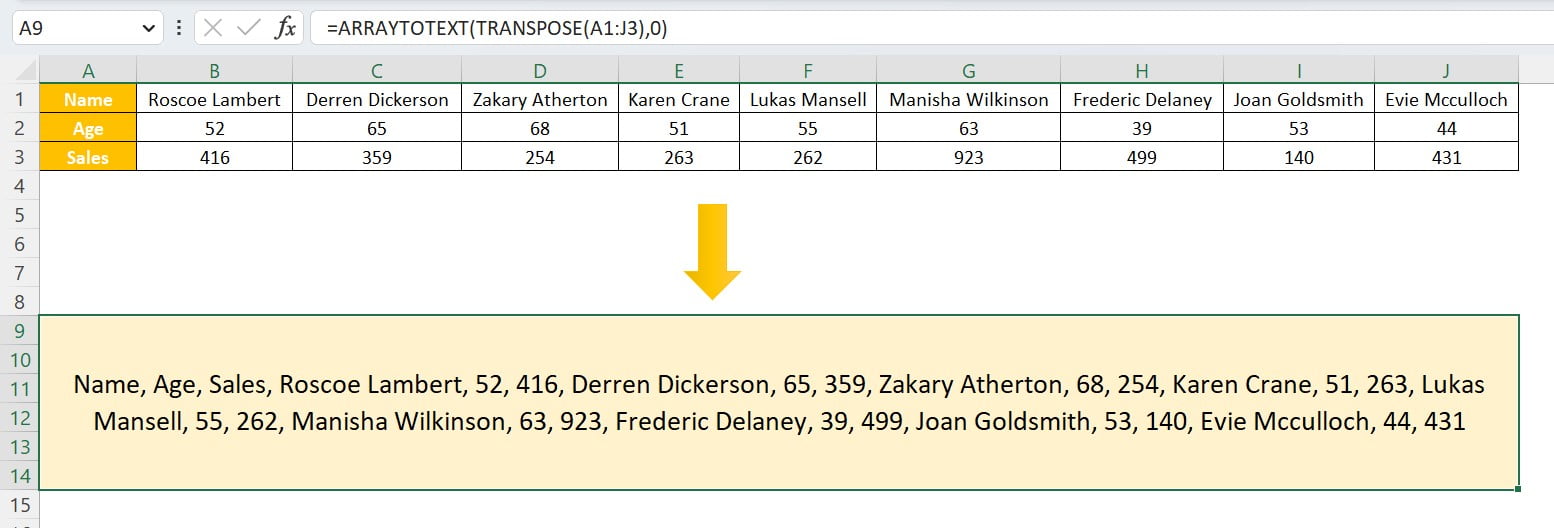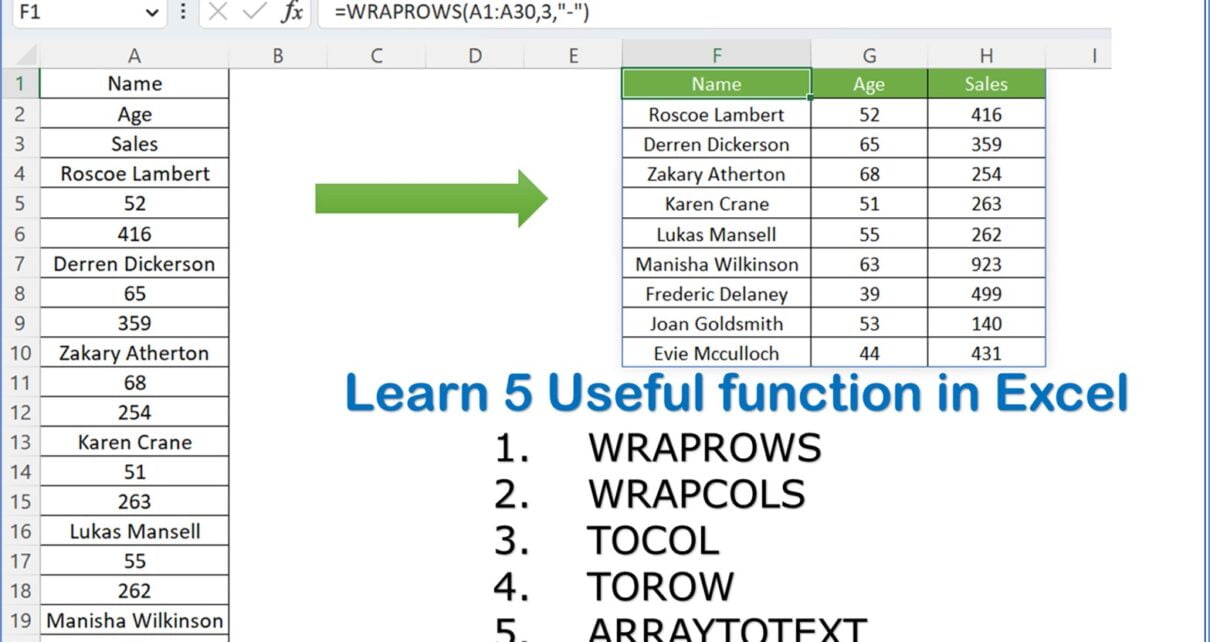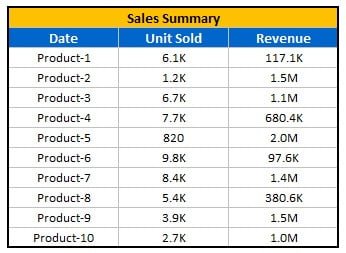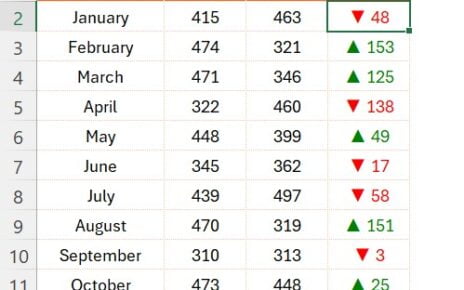The Excel formulas are absolute lifesavers when it comes to dealing with data in spreadsheets. They’re like the Swiss Army knives of Excel, allowing you to calculate, manipulate, and automate your data with ease. From basic math to complex conditional logic, formulas are the magic wands that turn raw data into meaningful insights. And let’s be honest, who has time to manually process large amounts of data? With formulas, you can get the job done in no time, leaving you free to focus on the things that really matter. Whether you’re a student trying to get through an assignment, a business analyst crunching numbers, or a data scientist looking for patterns, mastering Excel formulas is a must-have skill that will help you succeed in today’s data-driven world.
In this article, you will learn 5 new formulas in Excel. we have explained WRAPROWS, WRAPCOLS, TOROW, TOCOL and ARRAYTOTEXT function step by step with examples.
1- WRAPROWS:
WRAPROWS function converts the single row or column data into multiple rows according to the wrap count given in the parameter.
Syntax
=WRAPROWS(vector, wrap_count, [pad_with])
In this function syntax has the below arguments:
Vector: Range to wrap.
wrap_count: Number of values in each row after that new row will start.
pad_with: #N/A error will appear if no value is available to display from the vector. You can put your value to display in place of #N/A
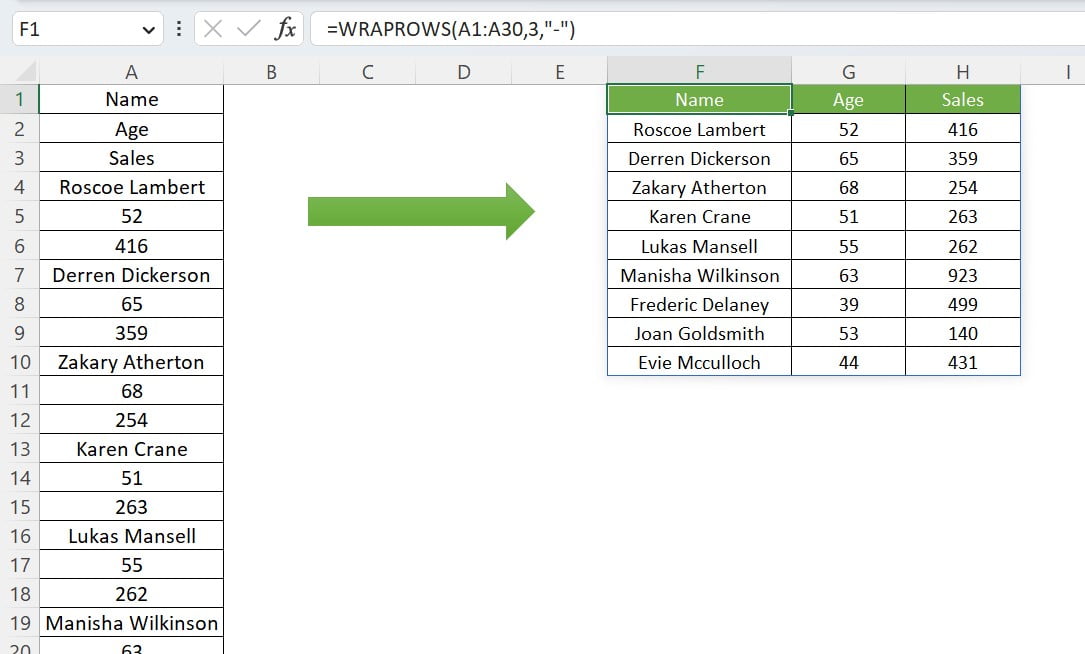
2- WRAPCOLS:
WRAPCOLS function converts the single row or column data into multiple columns according to the wrap count given in the parameter.
Syntax
=WRAPROWS(vector, wrap_count, [pad_with])
In this function syntax has the below arguments:
vector: Range to wrap.
wrap_count: Number of values in each row after that new column will start.
pad_with: #N/A error will appear if no value is available to display from the vector. You can put your value to display in place of #N/A

3- TOCOL:
TOCOL function returns an entire range into a single column only. It will append the data from multiple columns and rows.
Syntax
=TOCOL(array, [ignore], [scan_by_column])
The TOCOL function syntax has the below arguments:
array: Reference of a range that is to be converted into a single column.
Ignore: This is an optional parameter. If you want to ignore the blanks or errors or both then you can select 1,2,3 respectively. By default, it will consider all values.
scan_by_column: You can choose whether you want to scan your range by column or by rows to convert the data into one column. By default, it will scan by row.
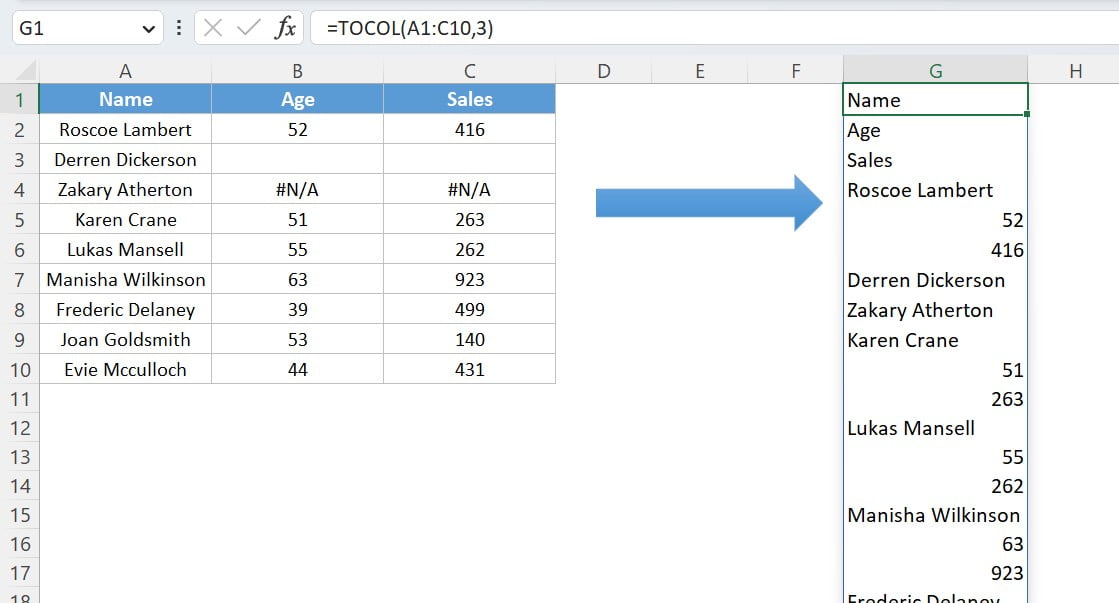
3- TOROW:
TOROW function returns an entire range into a single row only. It will add the data from multiple columns and rows.
Syntax
=TOROW(array, [ignore], [scan_by_column])
The TOROW function syntax has the below arguments:
array: Reference of a range that is to be converted into a single row.
Ignore: This is an optional parameter. If you want to ignore the blanks or errors or both then you can select 1,2,3 respectively. By default, it will consider all values.
scan_by_column: You can choose whether you want to scan your range by column or by rows to convert the data into one row. By default, it will scan by row.

5- ARRAYTOTEXT:
ARRAYTOTEXT function is used to convert an array or range into a comma-separated list of values from the range. It can also create a list of values with escape characters and row delimiters if you select the Strict format type.
Syntax
ARRAYTOTEXT(array, [format])
The ARRAYTOTEXT function syntax has two arguments.
array: Range reference which must be converted into a comma-separated list or list of values with escape characters and row delimiters
format: This is an optional parameter. Here you can select 0 for Concise format which is by default and 1 for Strict format list or list of values with escape. characters and row delimiters
